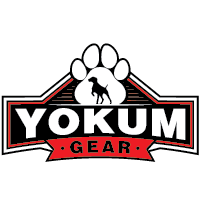Introduction
The Kong Marathon has rapidly emerged as a symbol of endurance, athleticism, and community spirit. Participants from all corners of the globe converge to test their limits, experience the scenic routes, and soak in the enthralling atmosphere of this iconic event. This guide aims to provide a comprehensive overview of everything you need to know about the Kong Marathon, from registration to recovery and everything in between.
History of the Kong Marathon
The Kong Marathon began as a modest local race but has grown exponentially in prestige and participation. What started with a few hundred enthusiasts has blossomed into an event that attracts thousands of runners and spectators each year. The marathon is celebrated not just for its challenging course, but also for its inclusivity, welcoming runners of all skill levels.
Registration and Entry
How to Register
Registering for the Kong Marathon is straightforward. The event's official website offers an online registration form where participants can sign up, choose their desired category, and pay the entry fee. Early bird discounts are often available, so it's beneficial to register as soon as the registration opens.
Entry Requirements
While the marathon is open to runners of various skill levels, certain entry requirements must be met. Participants typically need to be at least 18 years old on race day and may be required to provide a medical certificate confirming their fitness to run. It's crucial to read the entry rules thoroughly to ensure compliance.
Categories and Distances
The Kong Marathon offers several categories to cater to different abilities and preferences. These usually include:
- Full Marathon (42.195 km)
- Half Marathon (21.0975 km)
- 10K Run
- 5K Fun Run
Each category has its unique set of challenges and rewards, allowing runners to choose the one that best aligns with their fitness levels and goals.
Preparation and Training
Training Plans
A well-structured training plan is essential for success in the Kong Marathon. Most plans span 16-20 weeks and incorporate a mix of long runs, speed workouts, cross-training, and rest days. It's advisable to follow a plan tailored to your starting fitness level and the distance you aim to run.
Nutrition and Hydration
Proper nutrition and hydration play critical roles in marathon preparation. Runners should focus on a balanced diet rich in carbohydrates, proteins, and healthy fats. Hydration should not be neglected, with an emphasis on drinking ample water throughout the day and replenishing electrolytes during long training sessions.
Gear and Equipment
Selecting the right gear can make a significant difference. Key items include a pair of well-fitted running shoes, moisture-wicking clothing, and any necessary accessories such as a hydration belt or energy gels. It's recommended to test all gear during training to avoid any discomfort or issues on race day.
Race Day
Course and Terrain
The Kong Marathon course is renowned for its diverse and scenic terrain. Runners traverse through urban landscapes, serene parks, and challenging inclines. Detailed maps and elevation profiles are typically provided ahead of time, allowing participants to strategize accordingly.
Pacing Strategies
A smart pacing strategy is crucial for marathon success. Whether you're aiming for a personal best or just to finish, it's important to start conservatively and gradually increase your pace. Many runners find the use of GPS watches helpful in maintaining a consistent pace.
Support and Aid Stations
Throughout the course, aid stations are strategically placed to provide water, sports drinks, and sometimes snacks like bananas and energy bars. Medical stations are also available for any runners in need of assistance. It's beneficial to familiarize yourself with their locations beforehand.
Post-Race Recovery
Cool Down and Stretching
After crossing the finish line, a proper cool-down and stretching routine can aid in recovery. Gentle walking and dynamic stretches help to clear lactic acid buildup and prevent muscle stiffness.
Nutrition Post-Race
Refueling with a balanced meal that includes carbohydrates and protein is vital for recovery. Hydration should continue post-race to replenish lost fluids and electrolytes.
Managing Soreness and Injuries
Muscle soreness is common after a marathon. Techniques such as foam rolling, massage, and ice baths can alleviate discomfort. If any injuries were sustained, it’s important to seek medical advice and allow adequate time for healing.
Conclusion
The Kong Marathon is more than just a race; it's an experience that tests the limits of endurance and celebrates the spirit of community. Whether you're a seasoned marathoner or a first-timer, careful preparation, smart racing, and efficient recovery will ensure you enjoy every aspect of this remarkable event. Happy running!

